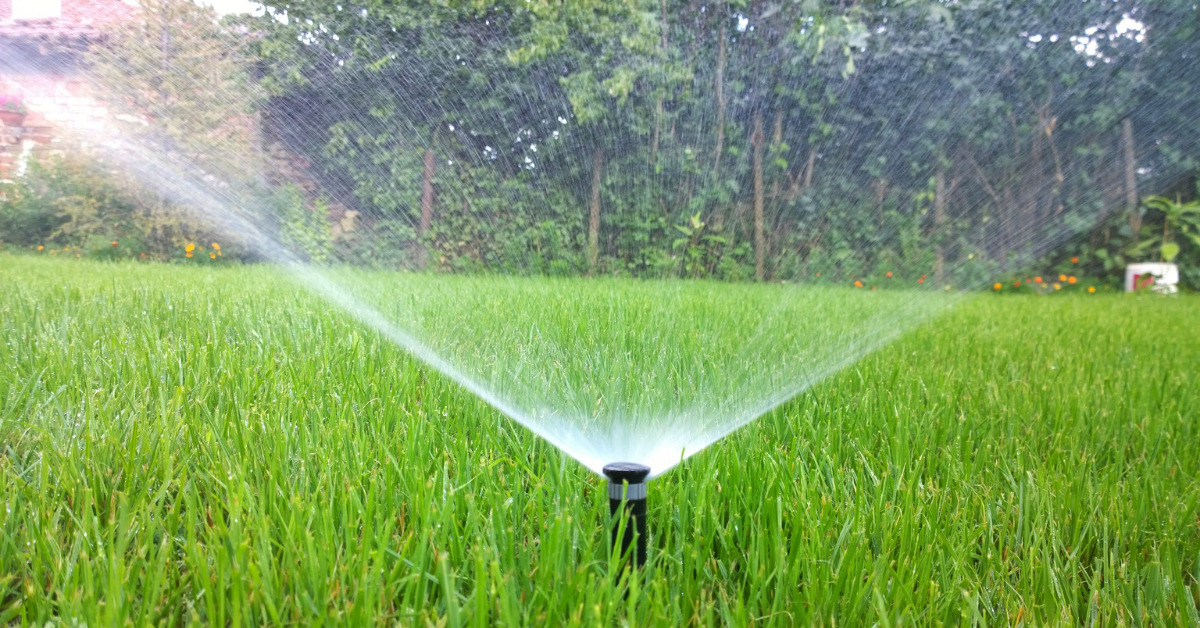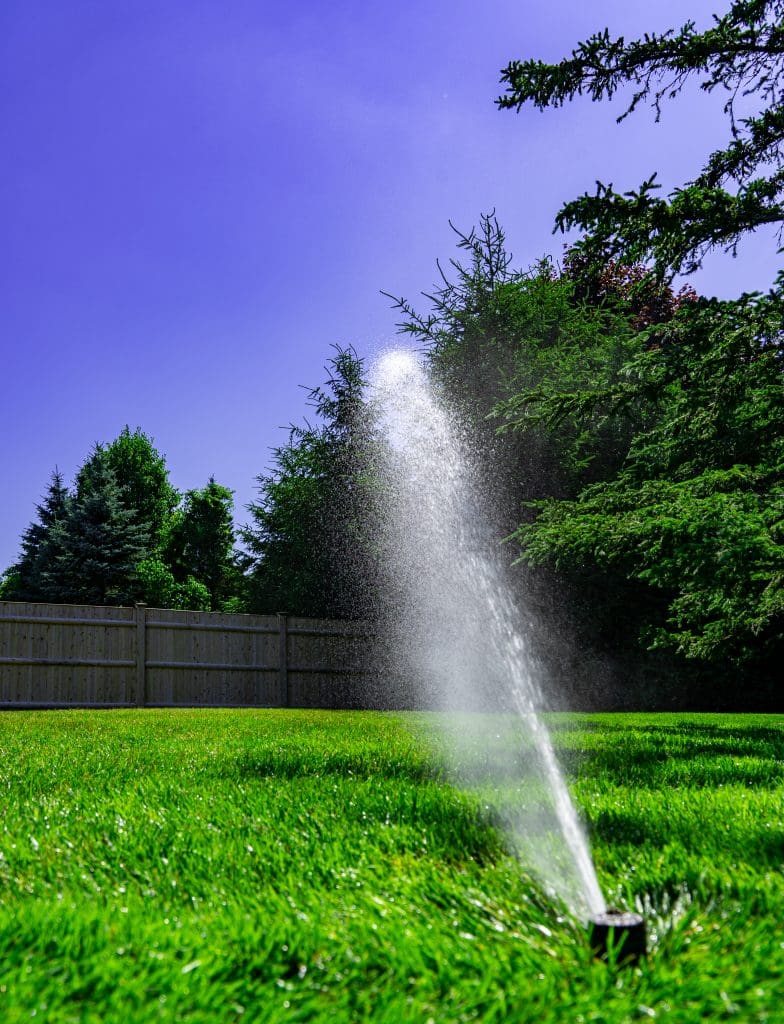
As temperatures warm up across the country, the time for conducting spring irrigation startups has started or is just around the corner for your landscape company.
Russ Jundt, founder of Conserva Irrigation, based in Glen Allen, Virginia, calls this process summerization because it is the opposite of winterization and there is far more to summerizing a sprinkler system than just “turning it on.”
Startup Mistakes
When an individual starts an irrigations system up incorrectly, there are a number of problems that can occur as a result.
“Summerizing a system too early in the spring when you are not beyond the freezing temperatures can be problematic and create freeze damage to the system,” Jundt says.
On larger systems, if the mainline system is not slowly introduced with water, water hammer can take effect and create significant damage to elbows and turns in the mainline.
Even incorrectly adjusting the sprinkler heads can result in wasted water. Spring startups are a time to optimize the best performance of the irrigation system to prevent high water bills.
“Following a regimented summerization protocol is not only necessary to ensure a properly functioning system, but it also creates a baseline to build upon for the remainder of the season,” Jundt says.
Conserva Irrigation technicians conduct a 50-point system inspection, where they make a comprehensive assessment starting at the water source searching for leaks or damage.
“From there we move to the controller and perform a full electrical diagnostic exam of the system, ranging from checking power into the controller, power from the transformer through each of the zone terminals, checking for healthy ohm readings in each zone, and ultimately checking the associated irrigation sensors for full function and connectivity,” Jundt says. “Additionally, if equipped, we check for Wi-Fi connectivity and double-check the controller program settings along with municipal water window settings.”
After that, they move on to checking each zone, valve box, head and nozzle to make sure the system is free of leaks, is optimized and is adjusted to perform at its best. The 50 points are sorted into categories of high priority issues that need to be fixed that day, design issues to be handled that season and efficiency upgrades to be implemented as the customer decides.
Similarly, Jay Rotonnelli, vice president of business development for Piscataqua Landscaping & Tree Service, based in Eliot, Maine, says their technicians will go through a property and flag all the problem areas on the site before they start working on the issues.
“One tech stays working on those repairs, and the other one is going through starting that zone up again, and making sure that the heads and the nozzles are clean and that the direction of the water flows and is going in the right direction so that we’re not wasting water,” Rotonnelli says.
Winter Damage
One of the common types of winter damage to be on the lookout for is cracked backflow preventers, which can happen if the backflow is installed outside and they haven’t been disconnected or blown out properly in the fall.

Rotonnelli says sprinkler heads are the most likely to be damaged in areas with lots of snow plowing.
“If you see any broken heads, you’d best fix that first,” Rotonnelli says. “Just because you’re not going to have any water in the system, it’s going be much easier to do.”
Not building pressure in the irrigation system could be another issue you encounter. Steve D’Angeli, irrigation supervisor at Belknap Landscape Co., in Gilford, New Hampshire, says this could be a result of a bad pressure tank splitting over the winter or a pressure switch being stuck closed over the winter.
“You turn your pump off, you unplug it, you lose pressure, the pressure switch clicks close,” D’Angeli says. “It might from the winter being closed stay closed.”
Jundt and D’Angeli say hung valves can occur if debris during the blow-out gets lodged and keeps the valve stuck in the open position.
Mice or other rodents can end up chewing on zone wires or solenoid wires if they are able to nest in valve or controller boxes. Controllers on older systems also may need to be replaced when they don’t come back on after being unplugged all winter. Rotonnelli says they opt to replace these older controllers with Wi-Fi controllers.
“It just creates a lot more efficiencies that people don’t need to be home to let you into their garage to get into the controller,” Rotonnelli says. “We’re trying to embrace that technology to better the industry as a whole. With those efficiencies, we can reduce labor and create a better experience for customers overall and water management.”
Jundt says it is best to replace the backup battery in the irrigation controller every spring.
D’Angeli says depending on the age of the backflow, they do a lot of backflow rebuilds as the gaskets inside get dried out.
“We do our best to remove the backflows during the winter for the blowout so we’re not blowing that warm air through it,” D’Angeli says.
Another element they have to replace frequently after the winter is check valves. Check valves go through a lot of wear and tear throughout the summer and during the winter without the pressure against them.
Common Signs of Leaks
Obviously, the biggest concern with irrigation systems is leaks that cause water waste. Leaking heads and pipes can sometimes go undetected in the fall when techs are winterizing the system.
“Sometimes it could be because there was a low spot in the pipe and water sat in there and it wasn’t blown out enough and it cracked the pipe or could be a head that cracked, there was water in the sump of the head or simply somebody hits something you couldn’t see and the head is sitting over in the snow pile back in somebody’s yard,” Rotonnelli says.
Some of the tell-tale signs of a leak in the system include hearing water going through a backflow constantly or a pump cycling continuously.
“A lot of times our technicians will sit by the pump for a little bit and just listen to what’s going on there to see what the pump’s actually doing,” D’Angeli says.
Bubbles or a squishy section of grass can also be indicators of an underground leak. D’Angeli says for some of their legacy clients, technicians know what a zone looks like with full pressure so they can tell when something isn’t looking right in a zone.
“In the spring during summerization our technicians step around every head to discern if there are any seal leaks at the bottom of the head,” Jundt says. “Water pooling around or over their boot is a good indication of a subsurface leak. For lateral or mainline leaks, usually, the leak will provide enough water to show where there are subsurface leaks.”

